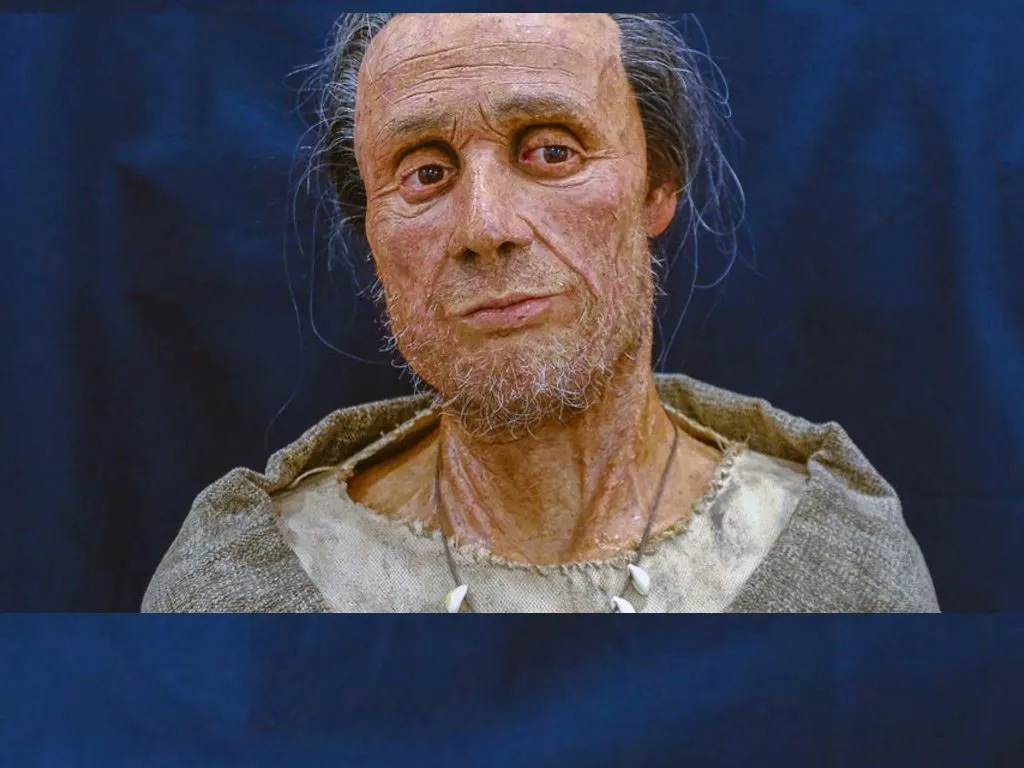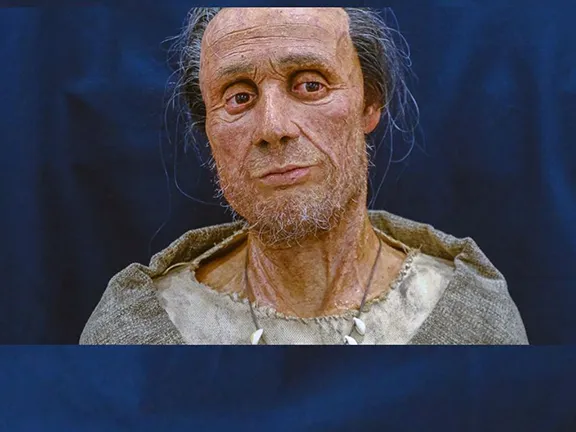DNA analysis shows that the Bray cave man originated in the Steppe region of eastern Europe
By Nick Nutter | Updated 14 Dec 2022 | Gibraltar | Places To Go |
Login to add to YOUR Favourites or Read Later


Image by Johnny Bugeja
A bronze age man, whose cranium was found at Bray’s Cave on Gibraltar, is set to join the growing prehistoric family at Gibraltar Museum.
Gibraltar Museum already has a small family made up of forensic reconstructions; Nana and Flint from the Neanderthal period and from the Neolithic ‘the first Gibraltarian’ – Calpeia.
The new addition to the family was excavated from Bray’s Cave on the Upper Rock by a team from the Gibraltar National Museum between 1999 and 2006. Nine individuals were found in total including a new born baby, two juveniles aged 9 or 10 and the other 5 years old, and an adolescent aged between 15 and 20 years. All were dated to between 1496 and 1900 BC.
DNA analysis shows that the Bray cave man originated in the Steppe region of eastern Europe. He was found with an amber bead that may also have come from the steppe north of the Black Sea, a known amber source. The DNA results from the Gibraltar cranium are now part of a much larger study tracing the ancestry of people in the Iberian Peninsula. The skin, hair and eye colour used in the reconstruction derived from the genetic information obtained from a sample of Iberian individuals from that period used in the overall study.
The study is being coordinated by the Harvard Medical School and they published some of their findings in the journal Science. Read the study here. The study indicated sporadic contacts between Iberia and North Africa by about 2500 BC and, by about 2000 BC, the replacement of 40% of Iberia’s ancestry and nearly 100% of its Y-chromosomes by people with Steppe ancestry. It appears that the Bronze Age Iberian population was replaced by individuals from the present-day steppes of Russia near the Black and Caspian Seas. This population movement of steppe peoples appears to have resulted in the complete replacement of the Iberian male population somewhere around 2000 BC. The man from Bray’s Cave was a descendant of this population that arrived from the steppe.
The staff at the Gibraltar museum are running a poll to come up with a name for the Bray cave man. The favourite name as the poll enters its last day is Yantar, which means amber in Russian.